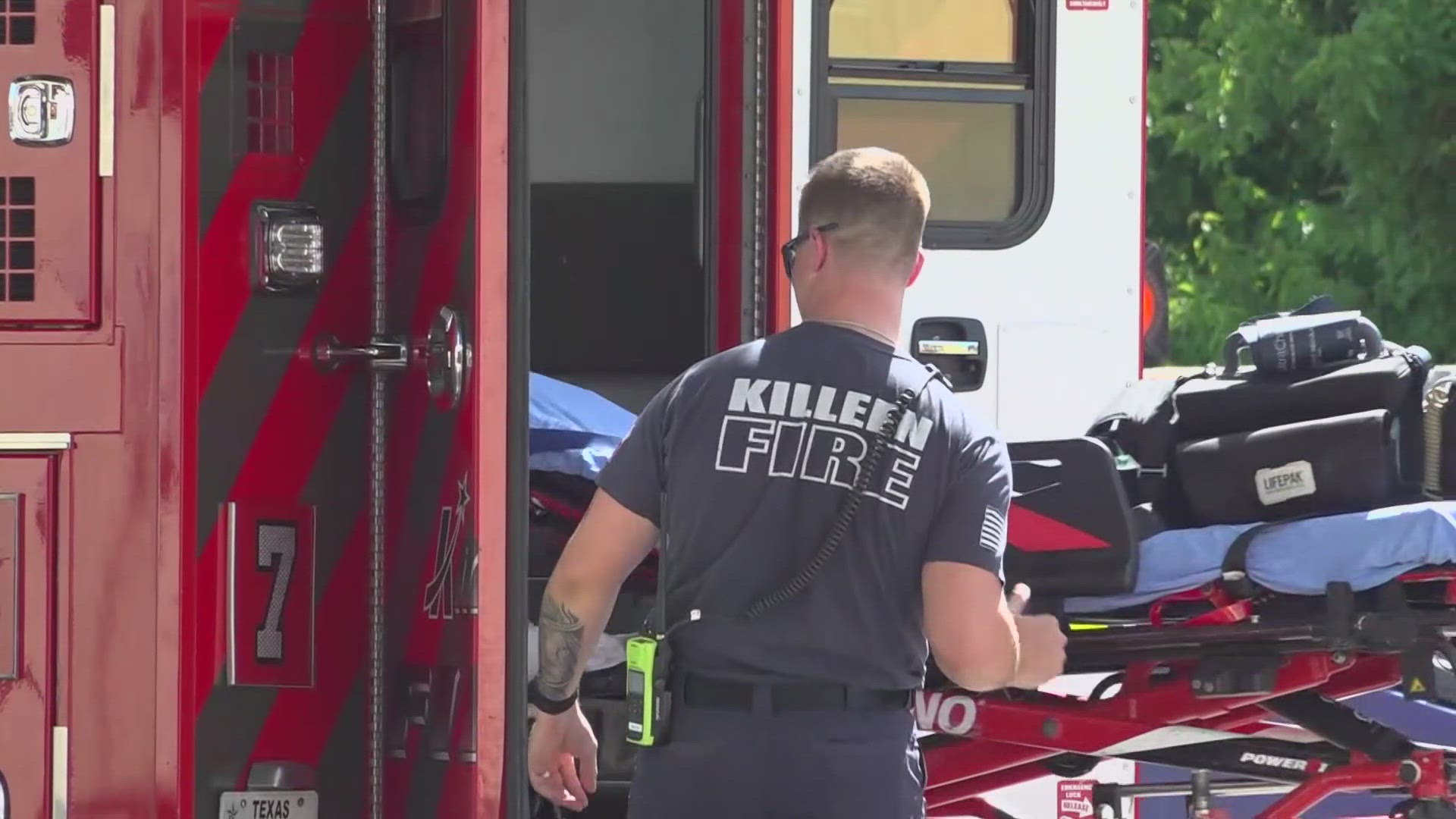KILLEEN, Texas — When Central Texas warms up, first responders see a jump in heat-related calls.
"Here at Central Fire Station, we'll see between 2 to 4 per shift," said Vincent Macias, a paramedic and fire rescue officer for the Killeen Fire Department. "I would say your good average would be about one to two per fire station is what they're going to run in terms of heat casualties during the main brunt of summer."
Macias said the majority of heat emergencies in Killeen are for people dealing with heat exhaustion.
"Your body's warning lights is that your muscles start to cramp," Macias explained. "Now, once you move from those cramps to start getting dizzy, lethargic, starting to become lightheaded, maybe you start to not act like yourself -- that's when we start moving to what's called heat exhaustion. That is where our life threats really start to begin."
First responders are shifting gears for the hot season, making sure they're prepared with the right tools and brushed up on life-saving methods.
"One, get you out of the environment, two, start passively cooling you down and three, if we need to start active cooling with that intravascular fluid and that intravascular access," Macias explained.
The Killeen Fire Department is also equipped to provide care a step further, too. They have a tool that is called a "polar portable cooling system."
"We use this for when we have an extreme case of heat casualty, also known as heat stroke," Macias explained. "Heat stroke for us is categorized as somebody who is no longer sweating so that their body has gotten so hot that they do not produce any more sweat to cool them down, and their core temperature is over 100.4°F."
The patient goes inside the bag naked as it is important for the hot clothing to not continue to warm the body. Then, first responders add ice or water, specifically to junctional areas -- the neck, armpits and groin.
"That is where our large blood vessels flow through and if you have your ice and water flowing across there, that cooling water is going to grab onto the blood that's in there and it's going to cool down the rest of the body and we want to cool the entire core," Macias said.
Macias stressed the importance of keeping your body as cool as possible and staying hydrated to beat the heat.
"If you are out doing vigorous work throughout the day, and not even vigorous work, if you're just walking around outside, an eight ounce cup of water every single 20 minutes," Macias said. "Then you also want to be eating. Your body needs carbohydrates, your body needs sugars, your body needs these good solid nutrients to be able to build and fight and take care of your system."
The number one threat in terms of heat is going to be towards the elderly and children, so ensure your loved ones are taken care of during the dog days of summer.
More from 6 News:

